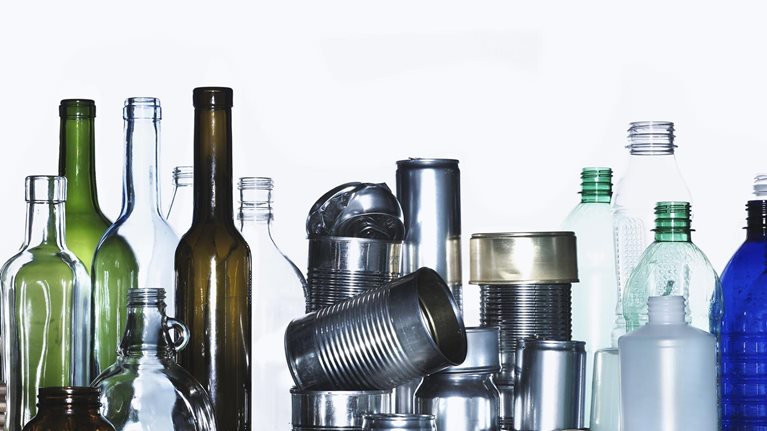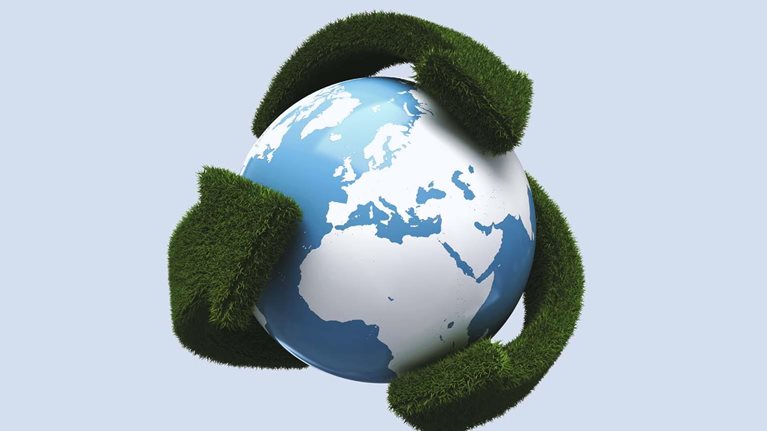Sustainability remains the number-one topic across the packaging value chain, with corporations setting ambitious targets to improve their performance. This is demonstrated by our recent global survey of packaging purchasers across industries, which shows that approximately 75 percent of organizations have made clear sustainable-packaging commitments—but fewer than 30 percent are well prepared to meet regional requirements, much less internal aspirations. And fewer than 30 percent of organizations have clear metrics surrounding recyclability, sustainability, or recycled content. Additionally, there are several organizational hurdles: fewer than a fifth of organizations have upskilled employees to incorporate sustainability themes or have implemented meaningful incentives to achieve sustainability goals. To turn this around and increase the focus on sustainability—without making trade-offs among cost, sustainability, and brand value—we suggest a holistic approach to driving impact by applying five critical levers across the organization.
A growing focus on sustainability
Sustainability efforts are increasingly becoming a focus, with many end-user segments in the consumer spotlight.1 Consumers value sustainably sourced and manufactured products—so much so that this has led to 2.7 times faster growth for sustainable products versus traditional goods, despite price premiums over their conventional counterparts.2 Meanwhile, policy makers and regulatory bodies are responding to public sentiment by implementing regulations related to single-use packaging while also placing extended producer responsibility (EPR) on consumer-facing products and a new focus on Scope 3 emissions. Currently, Europe is leading the way on most of these regulations; however, governments in Asia–Pacific and North America are developing similar legislation.3 All trends in consumer preferences, regulations, and government actions point toward sustainable packaging becoming a key focus for sustainability efforts.
Against this backdrop of increasing scrutiny, global corporations (as buyers of packaging) have been making ambitious sustainability commitments. There are two principal areas of focus, depending on the market stance of the company: most of product manufacturers’ overall emissions come from Scope 3, while consumer goods companies have a higher proportion of upstream emissions. Nearly 90 percent of emissions from food-and-beverage companies fall under Scope 3, with more than 60 percent from upstream activities.
Importantly, such sustainability commitments are equally applicable to packaging, which accounts for $1 trillion of annual global spending. Research shows that these commitments focus on three areas of activity: emphasis on full recyclability and a significantly higher degree of recycled content (60 percent of commitments), a reduction of total usage of plastics (26 percent), and innovation and the promotion of change in the use of packaging (14 percent).4
What is the post-pandemic status of these sustainability commitments, especially as product companies face new challenges and continued uncertainty? For example, pandemic-related supply chain disruptions and recent geopolitical upheavals have caused supply chain constraints across numerous commodity categories (such as pulp, recycled plastics, and virgin resin). Additionally, companies and consumers are more sensitive to cost as inflation continues to rise globally, hitting a 40-year high in the United States.5 To better understand the current situation, we launched a global survey of product companies across end users and industries, exploring how corporations are working toward their commitments. This was complemented by a series of interviews with industry participants to further understand developments around sustainability in packaging.
Progress on packaging sustainability commitments
Our global survey found that 75 percent of companies have already made sustainable-packaging commitments. The survey also found that for B2B and industrial companies, packaging sustainability has been given less attention, with about 66 percent of such companies having sustainable-packaging commitments compared with 80 percent of consumer goods companies. At the same time, however, our survey showed that fewer than 30 percent of organizations overall are well prepared to meet their commitments (Exhibit 1).


One often-noted factor challenging firms’ ability to achieve their stated sustainability ambitions seems to be the underlying complexity of their product portfolios. For example, in consumer companies, packaging design can often be determined by out-of-date technical requirements6: it is not uncommon for companies to have product specifications carried over from earlier-generation products. These frequently go unchallenged because no one in the organization has meaningful incentives to revise the specifications from a sustainability perspective. Indeed, our survey found that 75 percent of companies consider packaging sustainability only after the product concept has been finalized.
While sustainability remains the number-one driver for packaging design across all industries and regions (Exhibit 2),7 our survey found that organizations face four critical challenges in meeting their sustainable-packaging goals (Exhibit 3):
- Cross-functional collaboration. Our survey found that awareness of sustainable-packaging commitments varies greatly between functions: product development (92 percent), manufacturing (75 percent), and marketing and sales (67 percent). Holistic solutions that drive meaningful impact require all company functions to work together.
- Meaningful incentives. Fewer than 20 percent of organizations surveyed have sufficient incentives in place across all functions to drive implementation of sustainable solutions. Linking goals and incentives is a key enabler in fostering the right sustainable mindsets and behaviors across the organization.
- Clear sustainability metrics. Fewer than 30 percent of organizations have clear metrics around recyclability, sustainability, or recycled content in place.8 Well-defined metrics reinforce the corporate vision and guide the organization by bringing clarity to current performance, defining what success looks like, and increasing overall accountability by creating focus and alignment on the goal.
- Lack of upskilling. More than 80 percent of companies do not have up-to-date training programs to upskill employees or sufficient leadership to enable them to execute sustainable-packaging solutions.

Would you like to learn more about our Advanced Electronics Practice?
Five levers to pull to get ahead of the game
Sustainability in packaging does not necessarily mean higher costs: in one example, we saw how a manufacturer reduced Scope 3 emissions by eliminating one type of customized container that needed to be returned and replacing it with a collapsible container that could be dropped off and picked up at a local third-party vendor. This seemingly minor change cut emissions contributions from packaging by almost 50 percent and also reduced costs.
Based on our experience, most packaging solutions can be implemented in six to 12 months with the right execution. To do so without making trade-offs among cost, sustainability, and brand value, we suggest that product companies implement a holistic approach that can yield significant performance improvements (Exhibit 4).

The approach is built on five critical levers:
Use less. Reduce packaging, including both overuse of a product company’s own packaging and secondary and tertiary use. For example, one white-goods organization successfully removed secondary packaging by challenging outdated specifications.
Refresh. Companies can leverage customer insights and industry best practices to refresh their packaging designs. For example, a consumer-electronics company redesigned its product portfolio to optimize its packaging and customer experience. As a result of the redesign, the company was able to reduce materials used and optimized transportation while also improving the out-of-box experience for customers.
Transport. Companies can make substantial progress by improving pallet efficiency and the pack-to-product ratio. For example, a food and beverage company successfully reduced its transport emissions footprint by reducing “empty-mile” trips and increasing the fuel efficiency of its vehicles. Similarly, a consumer brand with a large portfolio of different-sized products reduced its CO₂ footprint by simplifying three sizes of master cartons to optimize containerization and drive transportation savings.
Materials. Sustainable materials, such as those with lower life-cycle emissions, can have a significant impact on packaging sustainability. For instance, a food and beverage organization was able to lower its life-cycle emissions by switching to bio-based packaging.
Circularity. Optimize for waste management by reusing materials and recycling and disposing of them properly. One cosmetics company offered free products to encourage customers to return empty pots in an effort to manage packaging that was difficult to recycle. An automotive supplier reduced logistical spend and emissions through route and packaging optimization by using collapsible, third-party reusable containers and optimizing shipping to and from local depots. This reduced the frequency and distance of empty outbound shipments.

2022 and beyond for the packaging industry’s CEOs: The priorities for resilience
The resulting impact of the five critical levers in Exhibit 4 working together can be substantial by combining sustainability benefits (such as lower greenhouse-gas emissions, improved material circularity, and reduced environmental waste), decreasing packaging spending, and helping to drive customer value through revenue uplift and lower costs, which can either result in lower end prices or a better bottom line. To succeed in this approach, a few factors will be key:
- clear commitment and conviction from leadership
- cross-functional adoption of this new way of thinking
- well-defined metrics to monitor performance, together with incentives to reach aspirational targets
Every function within the organization needs to adopt this way of thinking as part of a holistic approach to derive maximum impact from product development, sourcing, manufacturing, and marketing. This is not always the case today.
Sustainability is a strategic issue for the packaging value chain. With increased consumer awareness and regulations on the rise, there is no time to lose in ensuring that bold commitments can, in fact, be fulfilled. Corporations that delay will face significant uphill struggles, especially with capital increasingly being allocated on the basis of sustainability and performance. By contrast, companies that achieve their sustainability commitments, simultaneously driving cost efficiency and revenue growth, will progress to the next stage of the value creation journey.


